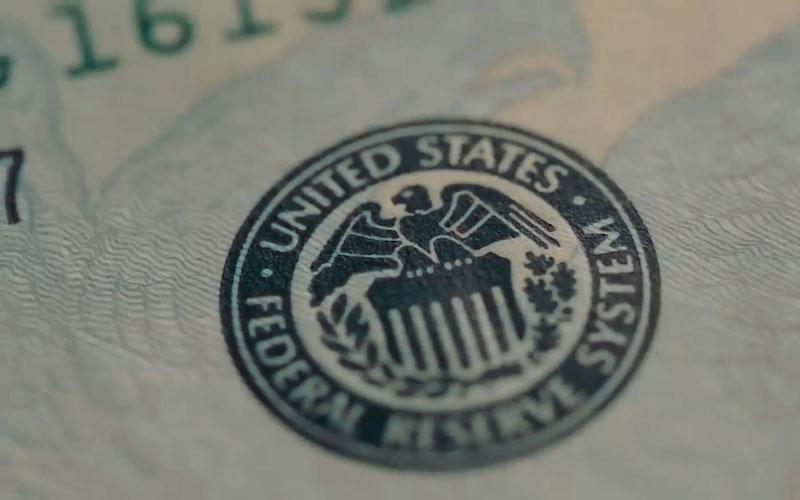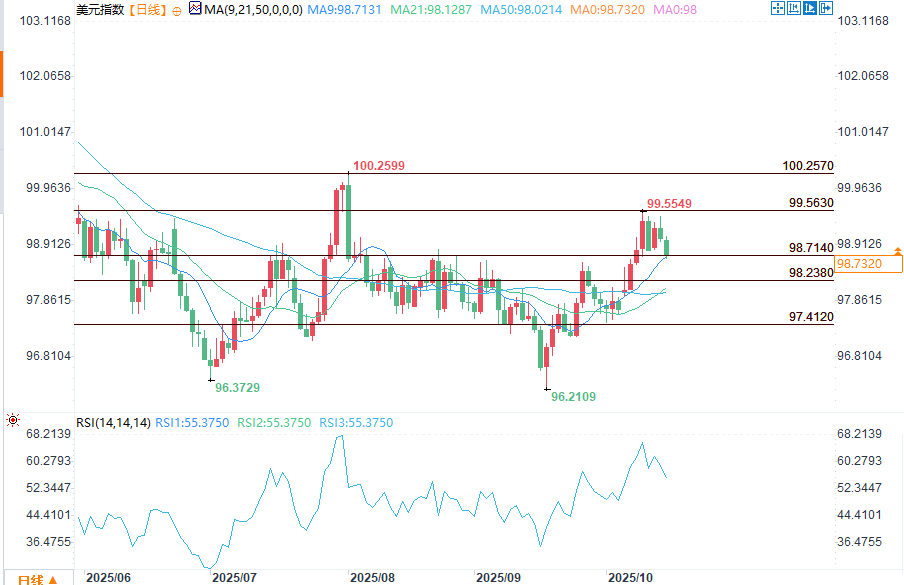US Dollar Index: Expectations of interest rate cuts coupled with improved risk sentiment put downward pressure on the US dollar
2025-10-16 00:41:04

After breaking through the four-day consolidation range, the US dollar index is facing further downward pressure. Traders are currently looking at two key support levels, namely 98.238 and the 50-day moving average near 98.025.
The Federal Reserve released a signal, and expectations of a rate cut increased.
The dollar came under pressure primarily from Federal Reserve Chairman Jerome Powell, who reiterated his dovish stance in a speech on Tuesday, citing continued stagnation in the U.S. labor market and a lack of hiring momentum.
Due to the long-term shutdown of the US government, official economic data cannot be released. Powell's remarks have convinced the market that the Federal Reserve is expected to advance its loose policy.
Data from the London Stock Exchange Group (LSEG) shows that the federal funds futures market has fully priced in two scenarios: a 25 basis point rate cut at the Fed's October 28-29 meeting and another 25 basis point cut at the December meeting. Furthermore, the market also anticipates further rate cuts in 2026.
Risk assets rebounded, while the dollar's safe-haven appeal declined
Positive sentiment in European and US stock markets also led to capital outflows from the US dollar. A rebound in the S&P 500 index, coupled with solid corporate earnings reports, boosted investor interest in equity assets.
Francesco Pesole of ING noted that as risk assets recover from recent pressures, funds are starting to rotate out of the dollar and into other assets.
Meanwhile, the Stoxx Europe 600 index rose 0.8%, boosted by optimistic corporate earnings expectations and political stability in France. This helped the euro rise for the second consecutive trading day, with the euro rising to 1.1635 against the dollar.
Non-US currencies collectively strengthened, putting pressure on the US dollar
The Japanese yen and Australian dollar also gained, rebounding from last week's sharp sell-off. The yen remained strong despite political uncertainty in Japan, while the Australian dollar benefited from stronger regional stock markets.
After British finance officials made soothing remarks on the upcoming fiscal plan, the pound rose 0.6% against the dollar to 1.3393. The strength of these non-US currencies pushed the US dollar index down further by 0.33% to 98.711, extending its decline since Tuesday.
Bond markets remain stable as trade tensions persist
Despite the ongoing trade tensions, Treasury yields were broadly flat, reflecting a cautious stance among bond traders. The 10-year Treasury yield edged down to 4.009%, while the 2-year yield held steady around 3.487%.
Investors are closely watching two developments: President Trump’s new threats of trade sanctions and China’s response with targeted countermeasures against U.S. companies.
Short-term outlook: US dollar index tends to be bearish

(Source of US Dollar Index daily chart: Yihuitong)
The US dollar index is currently testing a key retracement level, and there is no immediate support before the 50-day moving average of 98.025. Market sentiment has clearly turned negative.
Unless the dollar can find support at the 50-day moving average and rebound, the possibility of a further pullback to 97.412 remains. This pullback trend is more likely to form, especially against the backdrop of continued consolidation of interest rate cut expectations and high risk appetite.
- Risk Warning and Disclaimer
- The market involves risk, and trading may not be suitable for all investors. This article is for reference only and does not constitute personal investment advice, nor does it take into account certain users’ specific investment objectives, financial situation, or other needs. Any investment decisions made based on this information are at your own risk.





















